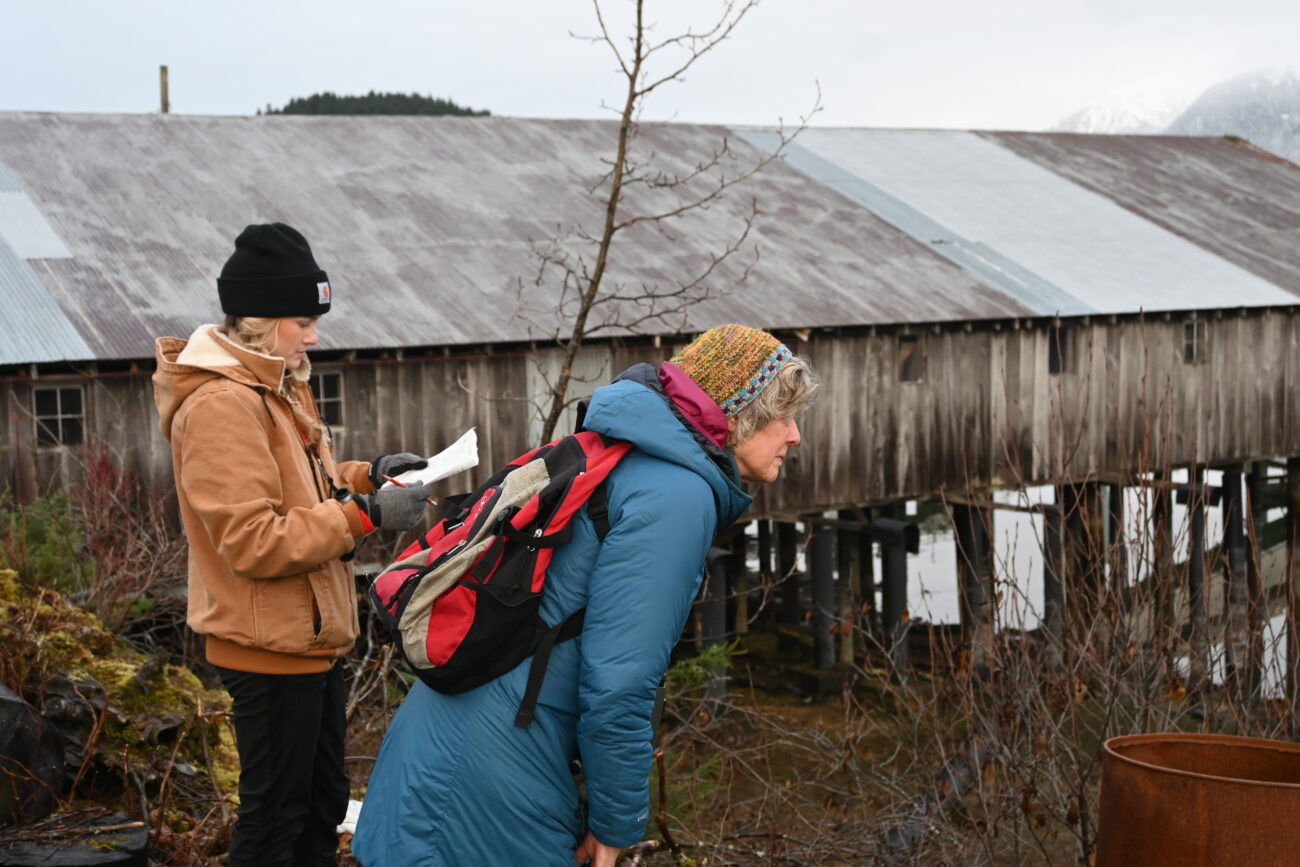
Dedicated birders count different species every holiday season around the world. You might see them walking along roads and standing in parks. It’s part of the Audubon Society’s annual Christmas bird count.
Bonnie Demerjian and Claire Froehlich were ready to join the Christmas Bird Count in Wrangell on an early December morning.
They’re met in Wrangell’s City Park where moss blankets the ground and surrounds the tall evergreens next to the Zimovia Strait.
“So what we’re going to do is mark down every bird we see,” Demerjian said. “I have an extra pair of binoculars.”
This is the 124th annual Audubon Christmas Bird Count in North America and people can count anytime between Dec. 14 and Jan. 5. It’s considered “citizen science” – or community science – because anyone can participate.
Demerjian’s counted for about 20 years, but it’s Froehlich’s first ever bird count, though she said she studied science and knows all the birds in Arizona.
“Learning about the different birds and stuff as just someone who loves nature and is out in the field a lot is really important,” Froehlich said. “I love when I can see a bird or hear a bird and I can recognize it.”
They walked away from Petroglyph Beach towards the main road. In a small forest patch with a few trees next to the path they walked, tiny birds flew swiftly from tree to shrub. They’re difficult to count because they moved too fast.
Froelich said, “Birdies where are you birdies?”
They heard ravens and gulls; saw harlequin ducks and song sparrows, while they checked off many more bird species on their list.
“Ok two Glaucous-wings and then that one was a herring,” Demerjian said. “Herring gulls have a little black on their wingtips.”
They wrote down all the birds they saw on a piece of paper and the app eBird. Demerjian said two boats of people also counted birds on the water that surrounds Wrangell.
The bird count happens every year to help keep track of bird species that are declining. The data from the count has been used in more than 300 peer reviewed articles. It’s a good benchmark for understanding the health of bird populations.
Demerjian said that she has her own reason for helping to save birds.
“To me, a lot of having birds around is just part of the beauty of life,” she said. “When you have less beauty your decline in your well being is also affected.”

Lauren Cusimano, the communications manager for Audubon Alaska, said that while local Audubon chapters hold bird walks and community events, Audubon Alaska takes care of the policy and advocacy work. She said the bird count has a long history.
“Let me fade into a Dickensian scene where, you know, in the year 1900, there was an ornithologist Frank Chapman in New Jersey, and a lot of the gentlemen of the time would go out and do a bird hunt around Christmas,” she said.
Cusimano said before Chapman, an early conservationist, began the Christmas Bird census, men would just shoot birds to count them. Now, decades later, tens of thousands of birders count every year.
Additionally, Cusimano said studies based on the bird counts have addressed climate change and the importance of biodiversity.
“And this is what leads to really important, though very somber, studies like the one that came out in the Journal of Science in 2019,” she said. “That detailed the study of loss of nearly 3 billion birds in North America that we’ve lost since 1970.”
Other bird counts exist throughout the year, like one in February that’s called the backyard count. This is pretty self-explanatory, where people count the types of birds they see in their backyards.
Cusimano said that bird counts are a good measure of overall health on planet Earth. Bird declines foreshadow an unhealthy climate and that affects other species, including humans.
But the birders counting this year are doing their part to help humans reduce those declining populations. Last year, 79,000 people counted and they tallied more than 40 million birds.











